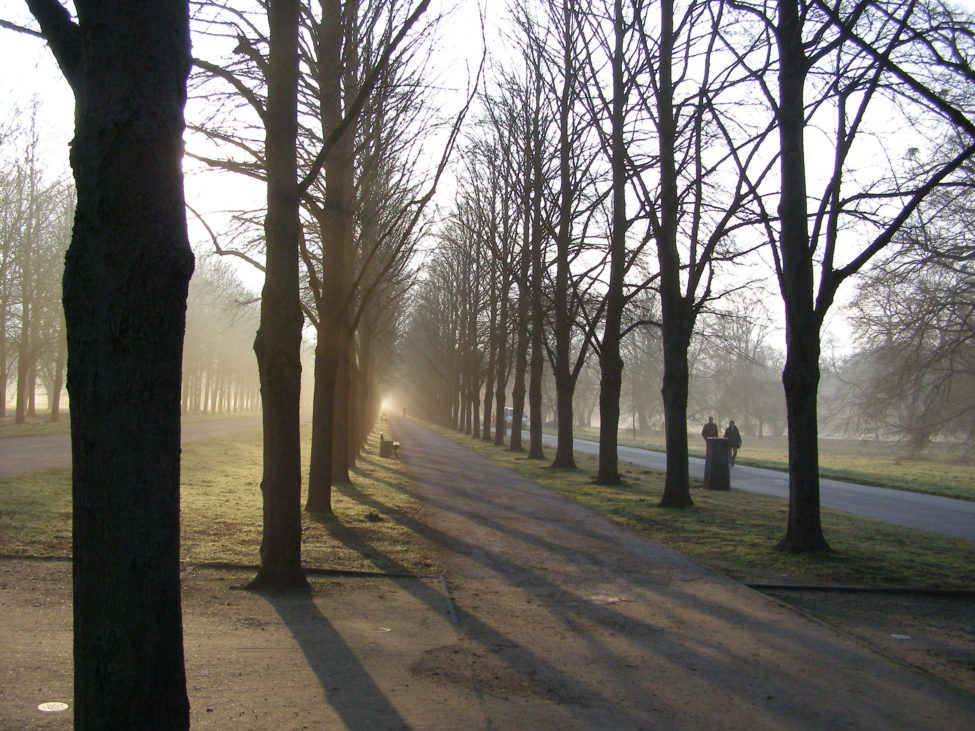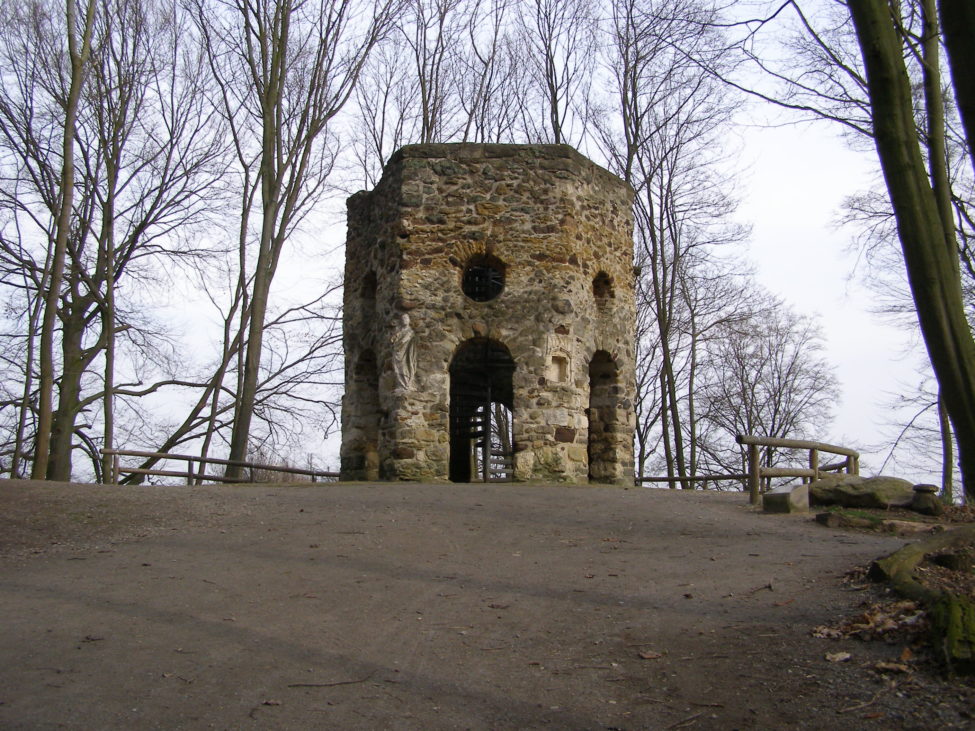As the son of George II’s mistress, Johann Ludwig von Wallmoden grew up in St. James’s Palace in London.1Ralf Bormann, ‘Johann Ludwig von Wallmoden-Gimborn’, in: The Hanoverians on Britain’s Throne 1714-1837. Catalogue of the exhibition held in 2014 in the Niedersächsisches Landesmuseum Hannover and Museum Schloss Herrenhausen (Hannover 2014), p.262. He was created Count (Graf) Johann Ludwig von Wallmoden-Gimborn in 1781. He was taken there by his mother, Amalie von Wallmoden, who (at the recommendation of Robert Walpole) joined King George II in London in 1737. The boy’s father stayed behind in Göttingen, Germany, where his son would later join him and study. After the Seven Year’s war, during which he rose to the rank of general, Johann Ludwig von Wallmoden relocated to Hanover, to the Wallmoden Schloss, situated between the city and the royal palace of Herrenhausen.2His mother had retreated there in 1761 after George II’s death the year before. In the latter half of 1764 Von Wallmoden would embark on his Grand Tour to Italy, where he heard the news of his mother’s death.
1760’s landscape gardens in Hanover
In 1766, the year following his mother’s passing, he started an extensive refurbishment of both the house and garden in Hanover.3Michael Rohde, ‘Zur Geschichte des Georgengartens und seiner Keimzellen: Wallmodengarten und Wangenheimgarten’, in: „Zurück zur Natur“. Idee und Geschichte des Georgengartens in Hannover-Herrenhausen. Catalogue of an exhibition in the Wilhelm-Busch-Museum (Göttingen 1997), p.11–40. A remark by Von Wallmoden himself indicates that work on the Georgengarten already started in 1761, i.e. when his mother returned from Engeland. The first known design is dated 1766, so it remains uncertain what -if at all- happened earlier. The house is currently known as the Wilhelm-Busch-Museum, the garden has since been reorganized, renamed into the Georgengarten, and turned into a rather dull city park with a few nice (19th century) features.
Von Wallmoden went to Vienna that same year, after being appointed ambassador of Great-Britain at the Imperial Court. The garden he had made for himself back home, a design by Johann Dietrich Heumann, is now known as one of the first German gardens in the landscape style -no surprise, given his childhood.4Earlier landscape gardens in Germany were those at Harbke, and Otto von Munchhausen’s garden at Schwöbber -although the latter didn’t strive or advise to create a landscape garden like the English; his was more an irregular garden filled with rare plant specimens. See: Marcus Köhler: ‘„Wenn wir erst einen ins Wilde angelegten Garten zu sehen gewohnt sind …“. Die frühen Landschaftsgärten von Harbke und Schwöbber.’ In: Die Gartenkunst (5/1993), Heft 1, p.101-125.
Herrenhauser Allee in Hanover in March 2014, with only a small part of the Georgengarten visible through the trees on the right. Photo: HvdE.
Around that same time another citizen of Hanover began to experiment with the new garden style. His name was Jobst Anton von Hinüber, Postmaster (among many other appointments) in the Kurfürstentum Hannover. In 1760 he was appointed Amtsmann of the cloister convent of Marienwerder. At the time, his garden was also called Marienwerder, but is now better known under the name Hinübersche Garten. It lies to the west-northwest of Hanover, on the rive droit of the Leine river. Von Hinüber is thought to have started ‘landscaping’ the garden in 1767, just after Von Wallmoden had begun work on hís garden closer to town. The Hinübersche Garten was once filled with bridges, pavilions, garden seats and many signs with poetic lines (often in English). It is now but a shadow of its earlier splendour, but local volunteers are in the process of reinvigorating the garden.
Hinübersche Garten, the so-called Hexenturm, one of the few remaining structures in the garden. Photo: HvdE.
So it is possible and plausible that these men knew and influenced each other. Both also had first-hand knowledge of gardens in England. Von Hinüber had at first only paid a short visit in 1737, but that was apparently long enough to be inspired: his other garden near Hanover was also laid out in the landscape style.5This garden at the Posthof was described by Hischfeld in 1785: C.C.L. Hirschfeld, Theorie der Gartenkunst, Fünfter Band (1785), p.197-203. In 1776 Von Hinüber returned to England, where he saw Whitton Park and other gardens.6Hartmut von Hinüber, ‘Jobst Anton von Hinüber – der Schöpfer des Gartens in Hannover-Marienwerder’, in: Der Hinübersche Garten in Hannover-Marienwerder. Eine freimaurerische Anlage (Hannover 2011), p.8-9.
The lodge Friedrich (zum weißen Pferde)
But there is another connection between both men, that seems to have escaped most writers about this development in Hanoverian garden history: both were Freemasons, and more importantly, they were members of the same lodge.7I’m conscious of the fact that a publication mentioning this, may exist -in which case I missed it. It is, for example, possible that Michael Rohde wrote about this in his 1997 ‘Parkpflegewerk‘ for the Hinübersche Garten -which I have not seen. (Michael Rohde, Parkpflegewerk Hinüberscher Garten im Hannover-Marienwerder (Hannover 1997). But it is certain he does not in his history of the Georgengarten in both an exhibition catalogue (Michael Rohde, op.cit. (Göttingen 1997), p.11–40.), nor in a standard work on next-door Herrenhauser Garten (Michael Rohde, ‘Der Georgengarten. Geschichte und Gestaltung.’, in: Marieanne von König (hrgs), Herrenhausen. Die Königlichen Gärten in Hannover (Göttingen 2006), p.221-236. The book about the Hinübersche Garten (see note 12) does not mention the Georgengarten, nor Von Wallmoden.
Von Hinüber (a generation older than Von Wallmoden) entered the Hanoverian lodge Friedrich in 1749, three years after it was established in 1746. Between 1753-1755 he was ‘Meister vom Stuhl’ in the lodge. In 1755 he became the first Provincial Grand Master of the Kurfürstentum Hannover, a position he would keep until 1765. In the meantime he had also been member of a lodge in Celle, and established another Hanoverian lodge called George. This would in 1765 merge with the lodge Friedrich, to form the lodge Friedrich zum weißen Pferde (the lodge and the name still exist now, 250 years later).8Hartmut von Hinüber, op.cit., p.9. Von Hinüber’s gardener was Georg Friedrich Dinglinger, himself a Freemason.9Hartmut von Hinüber, op.cit., p.16. The first person to print a description of the Hinübersche Garten was Hirschfeld, whose lengthy description of the garden layout and its features is a good read: C.C.L. Hirschfeld, op.cit., p.204-231 (as Marienwerder). But no word about possible masonic influences here as well.
The lodge was still just called Friedrich when Von Wallmoden presided over it as its Worshipful Master, in 1763-64.10Ralf Bormann, op.cit. Although Von Wallmoden seems to have been an exemplary figure in Enlightenment Germany, his masonic inclination is never mentioned in relation to his garden.11Not even when one expects it would (at least) get a mention, like here: Gotthardt Früsorge, ‘”Das Wohl der Länder und ihrer Freunde zu befördern”. Graf Johann Ludwig von Wallmoden-Gimborn in lichte der Aufklärung’, in: „Zurück zur Natur“. Idee und Geschichte des Georgengartens in Hannover-Herrenhausen. Catalogue of an exhibition in the Wilhelm-Busch-Museum (Göttingen 1997), p.65-72.
Masonic gardens or Freemasons’ gardens?
Does the fact that both men were masons by itself mean that both these gardens can be called ‘masonic gardens’? Certainly not. But the masonic nature of the Hinübersche Garten is being emphasized with force by the Hanoverian lodge, who seem certain they have the necessary information to back up that claim.12See their publication: Hartmut von Hinüber, Peter Krüger, Siegfried Schildmacher, Der Hinübersche Garten in Hannover-Marienwerder. Eine freimaurerische Anlage (Hannover 2011). It is available in .pdf here.
Then again, the men’s first-hand experience of gardens in England; the fact that they were both interested in this new gardening style; and that both had the opportunity to develop and execute extensive garden plans, may be all there is to it. Freemasons could often be seen spearheading developments in all kinds of fields, including gardening. The point here is to show that it seems these two men, members of the same lodge, fulfilled that role in Hanover in the 1760s.
And thus this lodge called Friedrich (zum weissen Pferde), and its members at this time, turn out to be of vital interest for the development of landscape gardening in the German part of the Personalunion. More research into this lodge and its members might reveal more treasures.
Footnotes
| ↑1 | Ralf Bormann, ‘Johann Ludwig von Wallmoden-Gimborn’, in: The Hanoverians on Britain’s Throne 1714-1837. Catalogue of the exhibition held in 2014 in the Niedersächsisches Landesmuseum Hannover and Museum Schloss Herrenhausen (Hannover 2014), p.262. He was created Count (Graf) Johann Ludwig von Wallmoden-Gimborn in 1781. |
|---|---|
| ↑2 | His mother had retreated there in 1761 after George II’s death the year before. |
| ↑3 | Michael Rohde, ‘Zur Geschichte des Georgengartens und seiner Keimzellen: Wallmodengarten und Wangenheimgarten’, in: „Zurück zur Natur“. Idee und Geschichte des Georgengartens in Hannover-Herrenhausen. Catalogue of an exhibition in the Wilhelm-Busch-Museum (Göttingen 1997), p.11–40. A remark by Von Wallmoden himself indicates that work on the Georgengarten already started in 1761, i.e. when his mother returned from Engeland. The first known design is dated 1766, so it remains uncertain what -if at all- happened earlier. |
| ↑4 | Earlier landscape gardens in Germany were those at Harbke, and Otto von Munchhausen’s garden at Schwöbber -although the latter didn’t strive or advise to create a landscape garden like the English; his was more an irregular garden filled with rare plant specimens. See: Marcus Köhler: ‘„Wenn wir erst einen ins Wilde angelegten Garten zu sehen gewohnt sind …“. Die frühen Landschaftsgärten von Harbke und Schwöbber.’ In: Die Gartenkunst (5/1993), Heft 1, p.101-125. |
| ↑5 | This garden at the Posthof was described by Hischfeld in 1785: C.C.L. Hirschfeld, Theorie der Gartenkunst, Fünfter Band (1785), p.197-203. |
| ↑6 | Hartmut von Hinüber, ‘Jobst Anton von Hinüber – der Schöpfer des Gartens in Hannover-Marienwerder’, in: Der Hinübersche Garten in Hannover-Marienwerder. Eine freimaurerische Anlage (Hannover 2011), p.8-9. |
| ↑7 | I’m conscious of the fact that a publication mentioning this, may exist -in which case I missed it. It is, for example, possible that Michael Rohde wrote about this in his 1997 ‘Parkpflegewerk‘ for the Hinübersche Garten -which I have not seen. (Michael Rohde, Parkpflegewerk Hinüberscher Garten im Hannover-Marienwerder (Hannover 1997). But it is certain he does not in his history of the Georgengarten in both an exhibition catalogue (Michael Rohde, op.cit. (Göttingen 1997), p.11–40.), nor in a standard work on next-door Herrenhauser Garten (Michael Rohde, ‘Der Georgengarten. Geschichte und Gestaltung.’, in: Marieanne von König (hrgs), Herrenhausen. Die Königlichen Gärten in Hannover (Göttingen 2006), p.221-236. The book about the Hinübersche Garten (see note 12) does not mention the Georgengarten, nor Von Wallmoden. |
| ↑8 | Hartmut von Hinüber, op.cit., p.9. |
| ↑9 | Hartmut von Hinüber, op.cit., p.16. The first person to print a description of the Hinübersche Garten was Hirschfeld, whose lengthy description of the garden layout and its features is a good read: C.C.L. Hirschfeld, op.cit., p.204-231 (as Marienwerder). But no word about possible masonic influences here as well. |
| ↑10 | Ralf Bormann, op.cit. |
| ↑11 | Not even when one expects it would (at least) get a mention, like here: Gotthardt Früsorge, ‘”Das Wohl der Länder und ihrer Freunde zu befördern”. Graf Johann Ludwig von Wallmoden-Gimborn in lichte der Aufklärung’, in: „Zurück zur Natur“. Idee und Geschichte des Georgengartens in Hannover-Herrenhausen. Catalogue of an exhibition in the Wilhelm-Busch-Museum (Göttingen 1997), p.65-72. |
| ↑12 | See their publication: Hartmut von Hinüber, Peter Krüger, Siegfried Schildmacher, Der Hinübersche Garten in Hannover-Marienwerder. Eine freimaurerische Anlage (Hannover 2011). It is available in .pdf here. |




